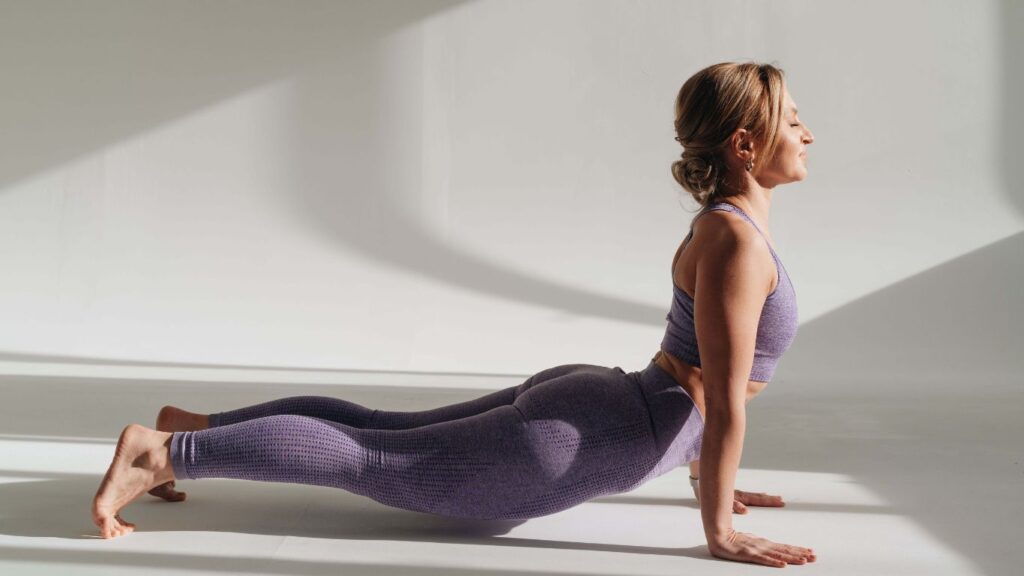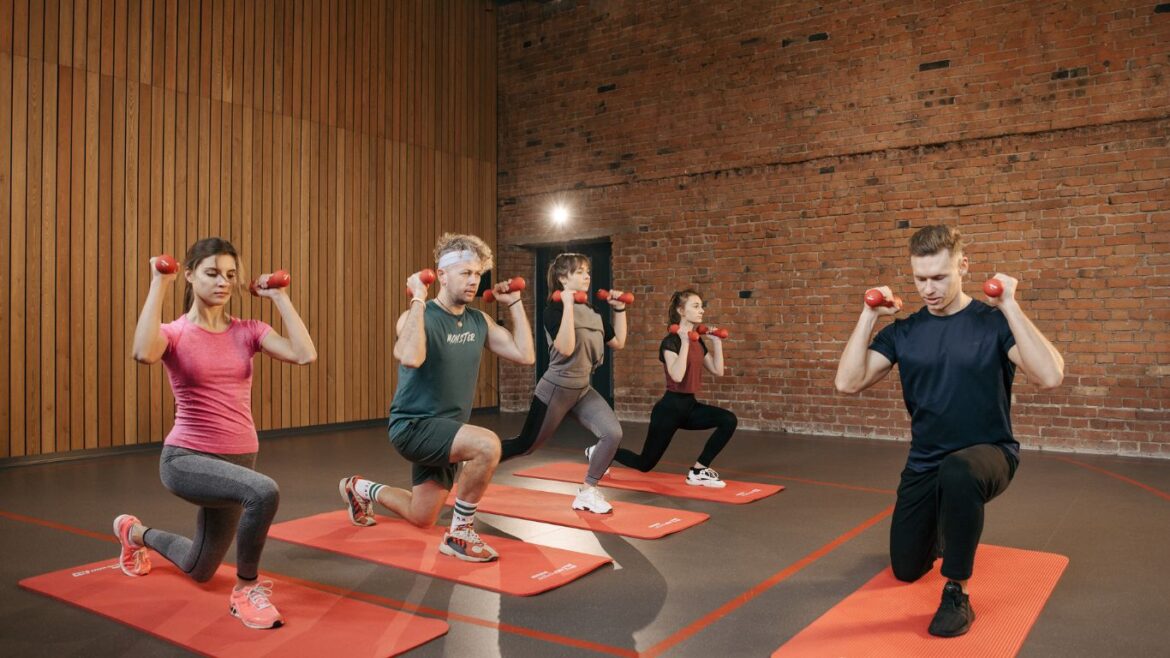In a world where fitness trends come and go, one concept has remained constant and relevant throughout the ages: functional fitness. Unlike many other workout regimens that focus solely on aesthetics or short-term goals, functional fitness is all about preparing your body for the demands of everyday life. Whether you’re lifting groceries, playing with your kids, or simply going about your daily activities, functional fitness can help you move with ease, reduce the risk of injury, and maintain a higher quality of life. In this blog, we’ll delve deep into the fundamentals of functional fitness, exploring what it is, why it’s essential, and how you can incorporate it into your daily routine.
The Fundamentals of Functional Fitness: Training for Everyday Life
Understanding Functional Fitness
Functional fitness is a holistic approach to training that emphasizes improving your body’s ability to perform real-world activities efficiently and safely. Unlike traditional bodybuilding or powerlifting, which often target isolated muscle groups for aesthetic purposes, functional fitness workouts focus on enhancing your overall strength, flexibility, balance, and endurance. The core principle of functional fitness is to prepare your body for the challenges of daily life, making it more resilient and adaptable to various situations.
Why Functional Fitness Matters
- Improved Daily Functionality: Functional fitness is all about making your everyday tasks easier to handle. When you strengthen your body through functional exercises, you’ll find it easier to lift heavy objects, carry groceries, climb stairs, and perform other routine activities. This increased functionality can greatly enhance your quality of life and independence as you age.
- Injury Prevention: Functional fitness helps prevent injuries by addressing common weaknesses and imbalances in the body. It reinforces stability, balance, and mobility, reducing the risk of accidents and injuries, especially in older adults. By strengthening the muscles that support your joints, you can reduce the chances of strains, sprains, and other common injuries.
- Enhanced Sports Performance: Whether you’re an athlete or someone who enjoys recreational sports, functional fitness can boost your performance. It helps improve agility, power, and endurance, translating into better results on the field or court. Many sports-specific training programs incorporate functional fitness exercises to enhance overall athletic performance.
- Long-Term Health Benefits: Engaging in functional fitness can lead to long-term health benefits, such as improved cardiovascular health, lower blood pressure, and better bone density. By promoting overall well-being, functional fitness contributes to a healthier, more active lifestyle.
- Adaptability: Functional fitness routines can be tailored to meet individual needs and goals. Whether you’re a beginner or an experienced fitness enthusiast, you can customize your workouts to challenge yourself appropriately, ensuring steady progress.

Key Components of Functional Fitness
Now that we understand the importance of functional fitness, let’s dive into its key components:
- Strength: Functional strength is the foundation of this fitness approach. Exercises that focus on compound movements, such as squats, deadlifts, and push-ups, help build functional strength by targeting multiple muscle groups simultaneously. This strength is vital for daily activities like lifting, carrying, and pushing.
- Balance and Stability: Maintaining balance and stability is crucial for preventing falls and injuries, especially as we age. Balance exercises, such as single-leg squats or yoga poses, help improve proprioception and coordination, enhancing your overall stability.
- Flexibility and Mobility: Functional fitness incorporates stretching and mobility exercises to maintain joint health and range of motion. Proper flexibility ensures that your body can move freely and perform daily tasks without discomfort or strain.
- Core Strength: A strong core is essential for maintaining proper posture, preventing lower back pain, and supporting everyday movements. Exercises like planks, Russian twists, and leg raises target the muscles of the core, including the abdominal and lower back muscles.
- Cardiovascular Endurance: Functional fitness isn’t just about strength; it also includes cardiovascular conditioning. Engaging in aerobic exercises like jogging, cycling, or swimming improves your heart health and enhances your ability to sustain energy during daily activities.
Incorporating Functional Fitness into Your Routine
Now that we’ve covered the essential components of functional fitness, let’s discuss how you can incorporate it into your daily routine:
- Consult a Fitness Professional: If you’re new to functional fitness, it’s a good idea to consult with a certified fitness trainer or physical therapist. They can assess your current fitness level, identify areas that need improvement, and create a customized workout plan tailored to your goals and needs.
- Start with the Basics: Begin your functional fitness journey with foundational movements, such as squats, lunges, and push-ups. Mastering these basic exercises will help you build a strong base of functional strength and stability.
- Progress Gradually: As you become more comfortable with the fundamentals, gradually increase the intensity and complexity of your workouts. Incorporate variations and new exercises to challenge your body and promote continuous improvement.
- Focus on Form: Proper form is crucial in functional fitness to avoid injury and maximize the effectiveness of your workouts. Pay close attention to your posture, alignment, and breathing during each exercise.
- Include Functional Movements: Integrate functional movements into your workouts that mimic daily activities. For example, carry heavy bags to simulate grocery shopping or perform exercises that mimic lifting a child to engage in activities that reflect your daily life.
- Mix It Up: Keep your workouts exciting and engaging by incorporating a variety of exercises and training methods. Functional fitness can include bodyweight exercises, resistance training, agility drills, and more.
- Prioritize Recovery: Rest and recovery are essential components of any fitness routine. Ensure you get enough sleep, practice stretching and mobility exercises, and listen to your body to avoid overtraining.
- Stay Consistent: Consistency is key to experiencing the benefits of functional fitness. Aim for regular workouts, whether it’s three times a week or more, and make it a part of your lifestyle.

Functional Fitness in Action
To better illustrate how functional fitness works in practice, let’s consider a hypothetical scenario involving two individuals: Sarah and John.
Sarah, who regularly engages in functional fitness, is a mother of two young children. She can easily lift her kids, carry groceries, and play with them at the park without feeling fatigued or experiencing discomfort. Sarah’s functional fitness routine includes strength training, balance exercises, and cardiovascular conditioning, all of which help her stay active and healthy.
John, on the other hand, has a sedentary lifestyle and rarely exercises. One day, he attempts to lift a heavy box while moving, and he injures his lower back. This incident not only causes pain and discomfort but also disrupts his daily life, preventing him from performing basic activities like bending, lifting, and even sitting comfortably.
This hypothetical scenario highlights the practical benefits of functional fitness. Sarah’s regular functional workouts have prepared her body for the physical demands of motherhood, making her daily life easier and more enjoyable. In contrast, John’s lack of functional fitness leaves him vulnerable to injuries and discomfort when faced with common tasks.
Conclusion

Functional fitness is not just another fitness trend; it’s a timeless approach to training that prepares your body for the challenges of everyday life. By improving your strength, balance, flexibility, and endurance, functional fitness enhances your daily functionality, reduces the risk of injury, and promotes long-term health benefits.
Incorporating functional fitness into your routine doesn’t require a complete overhaul of your lifestyle. Start with the basics, consult a fitness professional if needed, and gradually progress as you become more comfortable with the exercises. Remember that consistency and proper form are key to reaping the rewards of functional fitness.
Also read: The Power of Community: How Group Workouts Can Elevate Your Fitness Game
